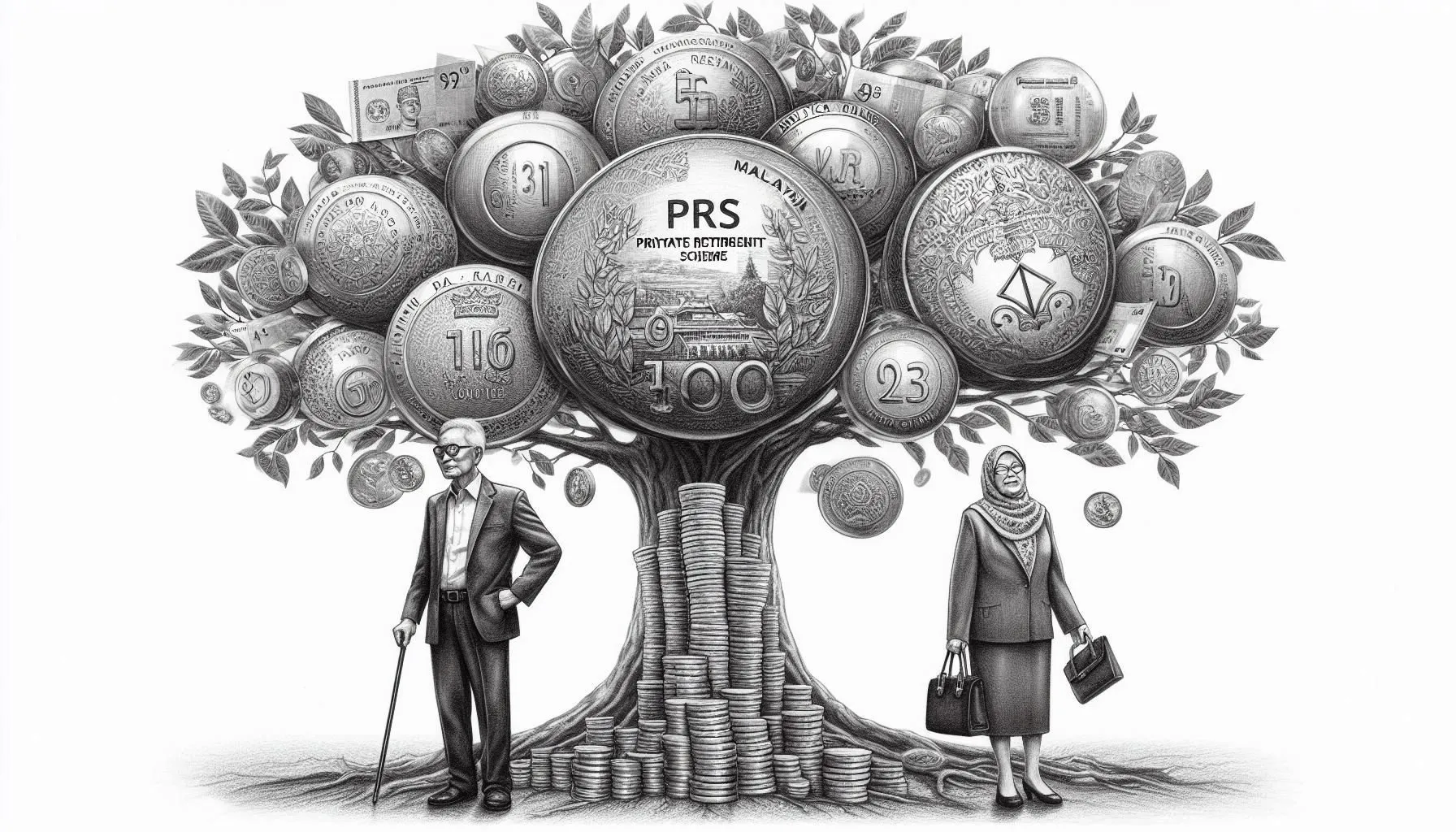Malaysia’s Private Retirement Scheme (PRS): A Smart Way to Save for the Future

Private Retirement Scheme (PRS) as an alternative retirement savings tool
In Malaysia, planning for retirement is a key financial goal, and one of the ways the government encourages individuals to save for their golden years is through the Private Retirement Scheme (PRS). It’s a voluntary long-term savings and investment scheme designed to help Malaysians build a retirement fund beyond the mandatory Employees Provident Fund (EPF) contributions.
This article will explain what PRS is, how it works, the tax benefits it offers, and examples of how you can start investing in it to secure your future.
What is PRS?
The Private Retirement Scheme (PRS) is a voluntary retirement savings scheme introduced by the Malaysian government in 2012 to supplement the mandatory savings under the EPF. It aims to give Malaysians another channel to save for retirement in a structured and flexible way.
PRS is governed by the Private Pension Administrator Malaysia (PPA), a body responsible for the day-to-day administration of the scheme. PPA ensures that all PRS providers comply with regulations and provide adequate information and support to individuals who invest in PRS.
Objectives of PRS
The main objective of PRS is to help individuals from 18 years and above, build an additional retirement fund to complement the savings they already have in EPF or other savings accounts. This allows Malaysians to have more financial security and independence when they retire. PRS investments are designed to grow over time, thanks to the power of compounding returns and professional fund management.
Tax Benefits of PRS
One of the significant advantages of investing in PRS is the tax relief it offers. The Malaysian government allows individuals who contribute to PRS to claim a personal tax relief of up to RM3,000 per year. This is a great incentive for those who are looking for tax savings while building a retirement nest egg.
For example, if you contribute RM3,000 into a PRS fund in a given year, you can reduce your taxable income by that amount. This can translate into substantial tax savings, depending on your income bracket.
Example
If you’re in the 21% tax bracket, contributing RM3,000 to PRS could save you RM630 in taxes (RM3,000 x 21%). This tax relief makes PRS not only a tool for saving but also an effective way to reduce your yearly tax bill.
How Does PRS Work?
PRS is offered by various PRS providers in Malaysia, including financial institutions such as banks, asset management companies, and insurance companies. Each provider offers different PRS funds that individuals can invest in, depending on their risk appetite and financial goals. For choice, there are the Conventional PRS and the Shariah-compliant PRS categories of funds.
Under Conventional or Shariah, each category is further sub-divided into three primary divisions of funds available under PRS:
- Growth Funds – Designed for individuals with a higher risk tolerance, these funds focus on maximizing returns by investing heavily in equities (stocks). Growth funds are suitable for younger investors with a long-term horizon.
- Moderate Funds - For those wanting growth with a balanced equity-to-bond/fixed income ratio, moderate funds are the way to go. These funds benefit those who still have an investment horizon of at least 10 years before the retirement age of 55
- Conservative Funds – These funds focus mainly on preserving capital and offer more stable but lower returns by investing primarily in fixed-income instruments, such as bonds. Conservative funds are suitable for individuals closer to retirement who want to safeguard their investments.
Each fund is managed by professional fund managers who aim to grow your savings over time. PRS funds are flexible, allowing you to switch between funds or PRS providers as your financial needs or risk tolerance change.
How to Invest in PRS: Step-by-Step
Investing in PRS is simple, and here’s how you can get started:
Step 1: Choose a PRS Provider
There are several PRS providers in Malaysia, including banks and asset management firms. Some of the well-known providers include:
- Public Mutual (Public Bank Group)
- CIMB-Principal Asset Management
- Manulife Asset Management
- Affin Hwang Asset Management.
Each provider offers a range of PRS funds, so it’s essential to research and compare the funds they offer before deciding.
Step 2: Select Your PRS Fund
Once you have chosen your PRS provider, the next step is to select the PRS fund that best fits your investment goals and risk profile. For example:
- If you’re in your 20's or 30's and can afford to take on more risk, you might choose a growth fund that invests heavily in equities.
- If you're in your 40's, consider contributing to moderate funds, for a more balanced approach
- If you’re in your 50s and nearing retirement, a conservative fund focused on bonds and fixed-income investments might be more suitable.
Step 3: Contribute to Your PRS Account
After selecting your fund, you can start contributing to your PRS account. Contributions are flexible, meaning you can decide how much and how often you want to contribute, based on your financial capacity. For example, you could:
- start with a lump sum investment of RM3,000 to take advantage of the full tax relief, or
- make monthly contributions of RM250, which would total RM3,000 for the year.
Step 4: Monitor and Adjust Your Investments
As your financial situation and retirement goals evolve, you can monitor the performance of your PRS fund and make adjustments if necessary. For instance, you can switch from a growth fund to a conservative fund as you get closer to retirement, or change PRS providers if you find better-performing funds.
Step 5: Withdrawal
While PRS is designed for retirement savings, of which 70% of the initial contribution goes into sub-account A, you can still make partial withdrawals from sub-account B, which holds 30% of your contributions, before the age of 55. However, these withdrawals are subject to an 8% tax penalty. Once you reach 55, you can withdraw your savings from both sub-accounts without any penalty, offering flexibility when you need the money for retirement.
Example of Investing in PRS
Let’s say you’re a 35-year-old Malaysian earning RM60,000 annually. You decide to invest RM3,000 into a PRS fund to take advantage of the tax relief. If you’re in the 21% tax bracket, the RM3,000 investment will save you RM630 in taxes for that year.
You choose a growth fund because you have a long investment horizon, and you’re comfortable with taking on more risk. Over the years, your PRS contributions, combined with the fund’s performance, could potentially grow your savings significantly due to compounding returns.
If the fund generates an average return of 6% per year, your initial RM3,000 could grow to RM5,373 in 10 years, assuming you make no further contributions. If you continue contributing RM3,000 each year, your retirement fund could be significantly larger when you reach retirement age.
Conclusion
The Private Retirement Scheme (PRS) is a great option for Malaysians looking to build an additional retirement fund while also benefiting from tax savings. It offers flexibility, professional fund management, and a range of investment options to suit your risk profile and financial goals. Whether you're looking to invest for the long term or simply take advantage of the tax relief, PRS can help you achieve a more secure and comfortable retirement.
If you haven’t yet started saving for your retirement outside of EPF, now is a great time to explore PRS and take control of your financial future.
